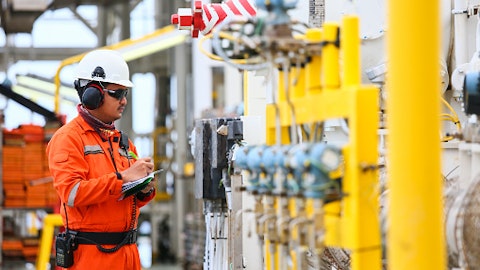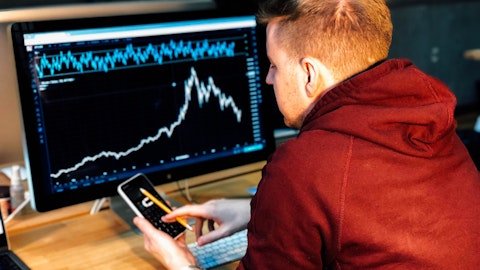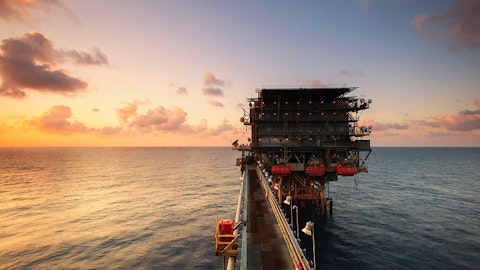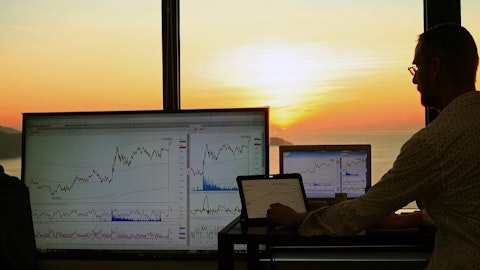Wael Sawan: Thanks for that, Sinead. And Oswald to your first question, just to play back. So the $23 billion to $27 billion includes a few things. One, we have said is it will include Nature Energy, which you know is to the tune of around $2 billion. Secondly, we’ve also said it includes general inorganics. So that’s also within that number. And then thirdly, indeed, there is inflationary pressure that we’re absorbing. The inflationary pressure we’re seeing at the moment is in the range of, say, 10% to 12%, typically. Of that, we’re being able to mitigate a decent portion of that but not all of it. Most of the mitigations come from long-term contracts with suppliers where we have these enterprise framework agreements that we can lean on because of the scale of our purchases with those suppliers.
So that allows us to mitigate some of the exposure. You talked about delaying projects and the like. There are examples of that, of course. We took the decision on Gato do Mato, which is our Brazilian offshore opportunity, to recycle that project because of the cost estimates that came in were higher than we were comfortable taking a final investment decision on. And so with a disciplined focus on our capital allocation, we said this is not the right time to do it. And therefore, we punt it until there is a better environment to be able to invest in. So hopefully, that just gives you a bit of a flavor of how our thinking has gone with that. Oswald, thanks for the question.
Operator: The second question is from Biraj Borkhataria at RBC Capital Markets.
Biraj Borkhataria: I’ve got 2, please. The first one is a few days ago, there were some headlines around you looking to review your U.K. electricity business. I was just wondering, I know this is not a huge part of the portfolio, but is this part of a broader review of your low-carbon efforts? Or is it specific to this business? Because I guess if I look from the outside in, this is a fairly low-margin business that actually has needed quite a lot of capital given all the volatility in power prices. So just wanted to get a sense of what has triggered that review there. And the second question is in the Upstream. So in 2020, 2021, you put out your emissions targets and all the targets related to the energy transition. And one of those was declining oil production, 1% to 2% per annum.
If I look at the last 2 years, it’s down something like 10% to 12%. So clearly, you’ve moved a lot faster on some divestments and so on, and that’s been a part of that. So given you’re well ahead of where you intended to be on that front, what does this mean for Upstream volumes going forward? Should we expect more stable production now or even growth? Because I guess the realities of the energy market are very different to when you put those targets out there as well. So just some thoughts on that.
Wael Sawan: Super. Thank you for that, Biraj. I’ll take both of those and start off with the SERL one, so Shell Energy Retail. The broad — the review of SERL is specific to SERL. It’s not a broader review of low-carbon investments. Ultimately, we are looking at every single one of our investments in its own right and trying to understand whether we can totally unlock the value out of that investment opportunity. For Shell Energy Retail, what we have found is despite a few years of trying to make that work as part of an integrated value chain, the market conditions are just structurally not there for us to be able to create the returns we expect. We have seen significant interventions from the government, including price caps, including windfall taxes.





